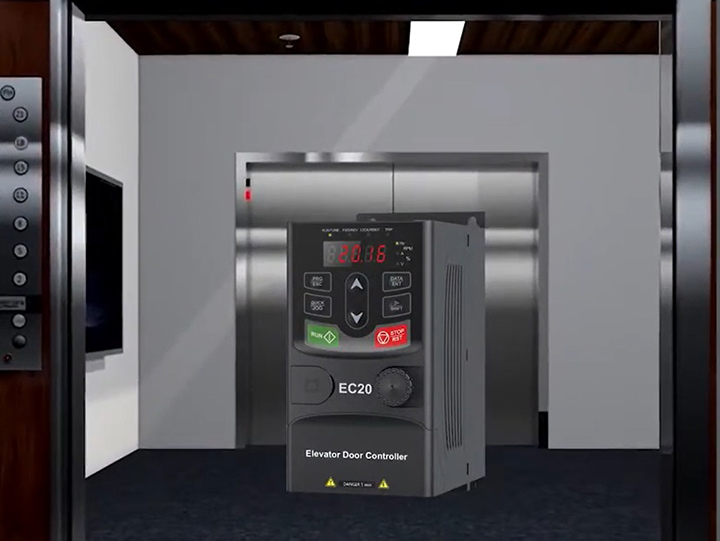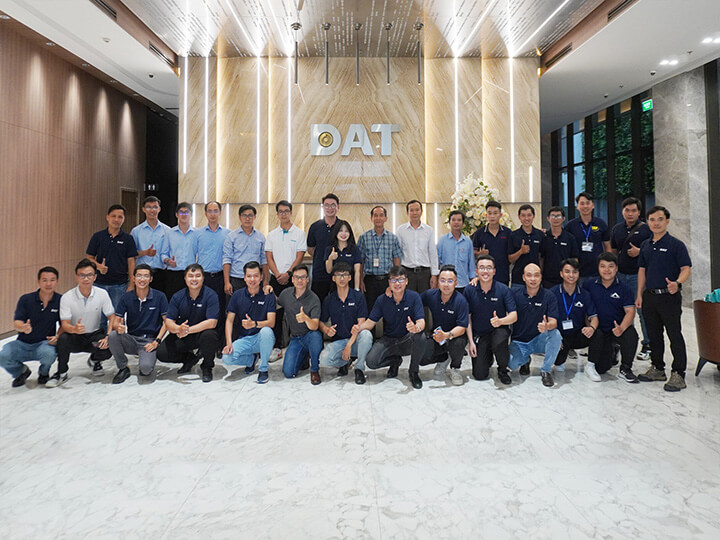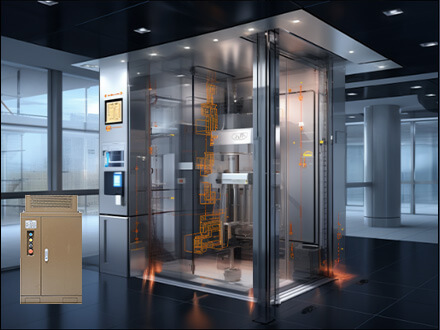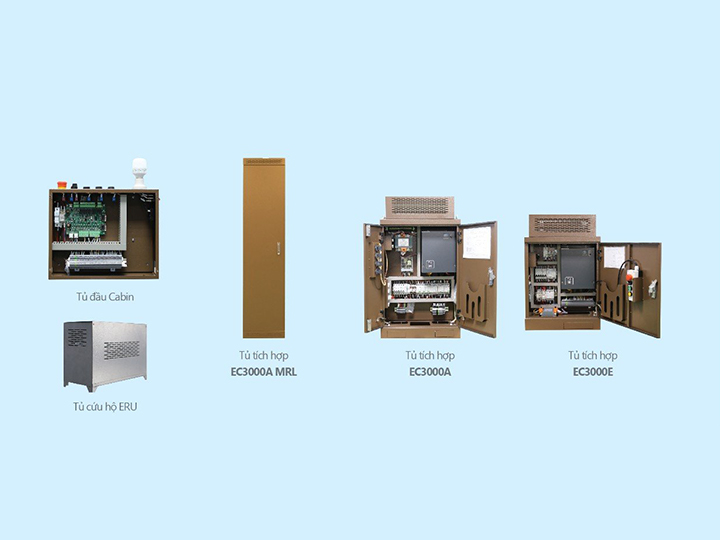Automation Today
Goal of automation is to increase labor productivity, turning it into a fierce global race, a competition between regions and nations. In the future, whoever can produce materials and products cheaper, faster, and better will be winner.
Dynamics of new era are rewriting rules of production and business. Technological development is driving a powerful and faster-than-ever change in the world. Whereas in the past, globalization relied on cheap labor, today’s globalization is predominantly based on knowledge. Knowledge has become key to development process.

This is not a gradual evolution; it is a revolution with rapid change. Current market economy is essentially a competition to sell advantages of knowledge, quickly generating significant profits.
Role of automation technology in national economy and societal development is immense. Automation brings numerous benefits in colorful tapestry of modern civilization. Therefore, our Party and State have identified automation as one of four priority high-tech directions for development. To integrate and develop in today’s globalizing trend, Vietnam’s automation field needs a large community of dedicated experts, a healthy environment for learning and research, and macro-level policies that support adaptable knowledge development in current world “flattening” process.
This report analyzes changes in global production and business, characteristics of automation product and service market, presents development of automation technology over time, discusses trends in future development, and outlines some fundamental aspects of opportunities, challenges, and measures for development of automation technology in Vietnam.
1. Dynamics of New Era
We have entered 21st century, and dynamics of a new era are rewriting rules of production and business. According to previous rules, large corporations with modern technology and breakthrough know-how were usually formed in developed countries like United States, Germany, and Japan. However, this rule no longer holds true. Formerly dominant massive corporations are gradually declining, while new leaders with innovative ideas and technology breakthroughs are emerging in developing countries. Technological development is driving a powerful and faster-than-ever change in the world. Whereas in the past, globalization relied on cheap labor, today’s globalization is predominantly based on knowledge. Globalization and free trade have disrupted traditional manufacturing patterns and locations worldwide. Knowledge has become key to development process. This is not a gradual evolution; it is a revolution with rapid change. Current market economy is essentially a competition to sell advantages of knowledge, quickly generating significant profits.
Sources of a nation’s prosperity include natural resources, human resources, and knowledge. Natural resource availability is closely tied to geographic location and is increasingly scarce. Pool of physical labor is shrinking due to advancement of automation. Only knowledge remains as vital resource that differentiates and drives development for each nation and humanity. Knowledge resources no longer depend on geographic location. With the development of Internet, geographical location has become less relevant. Internet strongly supports rapid dissemination of knowledge. Formerly, knowledge was power that defined the world dominance of capitalist developed countries, but they are gradually losing this advantage. Stemming from availability of cheap labor in developing countries, industrialized nations have had to transfer factories and outsource production to less-developed countries. These outsourcing activities have gradually transferred technology and know-how to other countries, and this process has led to renewed competition from developing countries like China and India against developed nations.
Development of technology, which drives societal development, has evolved since formation of human society. Millions of years ago, before dawn of civilization, human life relied mainly on rudimentary technology for gathering and hunting. From around 10,000 years ago until 18th century, human existence and work were based on an agricultural economy. From early 19th century to mid-20th century, the world entered era of industrialization. Period from 1960s to the present day (2010) is era of information technology development. Today, we are stepping into an era of development driven by nanotechnology and virtual reality, which are causing fundamental changes in human society.
Landscape of technology in the world is undergoing considerable shifts. China and India stand out as the most impressive nations. With a world population of approximately 6.5 billion, China accounts for 1.4 billion and India for 1.16 billion. Together, these two nations represent 40% of global population. Combining 25% of China’s most intelligent individuals with 28% of India’s most intelligent individuals results in a larger number than entire population of Europe or United States. China’s university system produces 700,000 engineers annually, and India produces 500,000 engineers. These figures exceed number of engineers in United States and Europe combined. Additionally, China’s and India’s university systems are expanding in terms of both quantity and quality, fostering an environment for development of technology and human resources to compete against developed countries. Beyond China and India, other countries such as Russia, Brazil, South Korea, Mexico, and Eastern European developing nations are also experiencing robust growth in intellectual resources. Advanced technology advantages of developed nations like United States, Japan, Germany, and France are slowly eroding. The world is becoming “flatter” as Tom Friedman predicts, due to development of technology and Internet, and this is leading to new scenarios:
- A globally connected network environment will create diverse forms of collaboration, enabling knowledge and work-sharing regardless of geographical distance and language.
- International companies will no longer require vast physical offices. Employees can be numerous specialists spread across globe and easily assembled as needed.
- Numerous opportunities will arise, allowing individuals to compete on an equal footing with anyone, anywhere in the world.
Process of “flattening” the world is rapid and irreversible. What each progressive nation needs to do is not to resist it, but to accept and adapt to competitive environment by improving human resource training, establishing faster connections to global resources, and implementing better globalized policies. This is new game we need to integrate into and actively participate in; otherwise, we will be left behind, watching other countries move forward.
Goal of automation is to increase labor productivity, turning it into a fierce global race, a competition between regions and nations. In the future, whoever can produce materials and products cheaper, faster, and better will be winner.
Development of automation technology in recent times is closely related to tdevelopment of other advanced technologies, such as information technology, telecommunications, and electromechanics. Achievements of microprocessors, networks, and communication are widely applied in automation products and systems. Conversely, many principles of automatic control are used in information technology products. High-tech products are becoming smarter and are optimally designed to integrate both physical component (mechanics, components, etc.) and virtual component (software, algorithms) from perspective of electromechanics. This trend creates integrated products that encompass multiple functions from various technological fields. Convergence of technologies within a product is narrowing boundaries between information technology & communication, automation technology, and electromechanics.
2. Automation Technology Market
Unlike information technology market, market for products and services in the automation field is diverse and complex, with countless products, varieties of equipment, sensors, display lights, indicators, actuators, and more. It can be said that each measurement and control application has its own specific characteristics and requires a unique solution. Millions of temperature sensors are used, but there are many types, each tailored for a specific application with different technical specifications for size, shape, and standards. Volume of each type is not necessarily large. Demand for automation is high, but applications are diverse, so there are fewer automation companies with significant value compared to giants in information technology sector like Intel, Microsoft, Cisco, and so on. Automation companies often start with an idea to create new products or services. When a product reaches a certain level of production, it becomes difficult to continue development due to market saturation. To ensure business growth, companies must continue to invest in creating better new products and services. This is something that few automation companies can sustain. Therefore, strength of automation companies is difficult to exceed a certain threshold.
Integrated automation system companies undertake functions such as survey services, integrated hardware design, software development, installation, and system maintenance. However, the market for integrated systems is diverse and requires a wealth of technological knowledge and expertise. These companies are often highly professional and serve well in specific fields with experience, such as automation in cement, steel, oil, and gas production processes. To expand into other areas, companies need to invest in both equipment and new personnel to effectively implement. Therefore, integrated automation system companies can only develop to a certain extent and have difficulty in further expansion and growth. On the other hand, many companies producing automation products, equipment, and systems are also expanding into integrated system services to provide comprehensive solutions (total solution providers). However, this makes these companies competitors with traditional customers, particularly local system integration companies.
Growth of automation companies depends on whether they can create new products or find new markets. To create new applications with their existing products, companies need to improve old products and market new application capabilities. To develop new products, companies need a research and development team with innovative talents and new ideas. For expanding into new territories, companies need a global marketing strategy that few companies can accomplish. As automation market is diverse and complex, growth requires time, money, and investment in marketing, which only a few companies can endure. Venture capital firms also invest less in automation market due to its lower growth potential, higher capital requirements, longer payback period, and lower profitability. Despite stable annual growth of industrial automation market, especially in developing countries, it is slow, and few investors have patience to wait.
Obstacles to growth of automation companies stem from diversity and complexity of market. With development of new technologies, automation market will enter a new phase. Companies leading automation market in the future must have specialized technology that creates competitive advantages and superior features. Products must meet specific requirements of local market. Future automation companies will be those capable of providing solutions, adding value to local needs. Automation customers will buy solutions, not just products. With trend of globalization, automation companies need to find various methods to expand into global market, reduce dependence on parent company, and maximize their responsibility towards local customer needs.
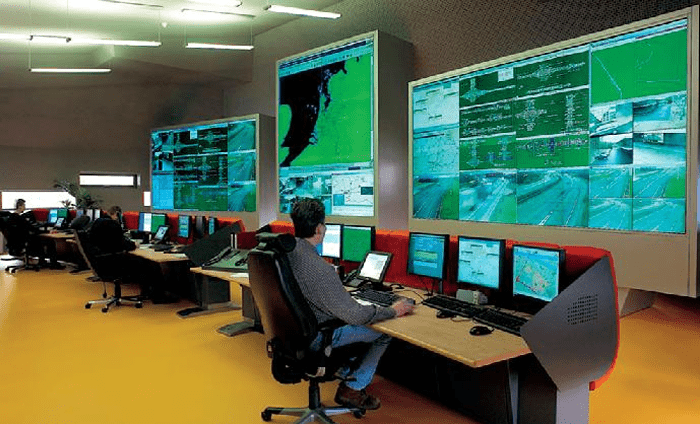
3. Automation Today
VFDs nowadays are developing strongly in our country due to their ability to transform alternating current at one frequency to another frequency, which can be adjusted. This helps control production machinery, accelerate or decelerate, and effectively protect motors.
Next is servo product designed for highly precise manufacturing machines such as CNC milling machines, rotating cutting machines, length-cutting machines, packaging machines, label applicators, embroidery machines, and printers. …
PLC-HMI also holds a significant share of market. It helps control machinery with powerful programming software in various languages. We can easily program standards for operation and various monitoring and protection functions that are user-friendly.
UPS is widely used today, both in civil and industrial applications. It helps store electricity in case of power outages, ensuring that machines and critical data processing units remain functional.
Solar inverters have entered Vietnam market for over a year now and have gained considerable attention. This product holds promising prospects.
Additionally, temperature, pressure, level, and concentration sensors, as well as executive mechanisms such as motors, valves, cutting devices, and indicator devices like LED and LCD panels, as well as regenerative braking and kinetic braking systems, have undergone diverse development. They are further integrated with processors to enhance intelligent automation features, marking development of automation technology.


